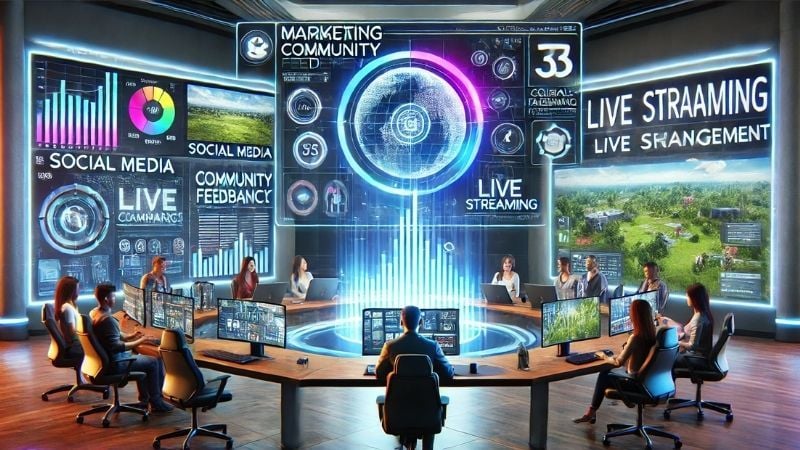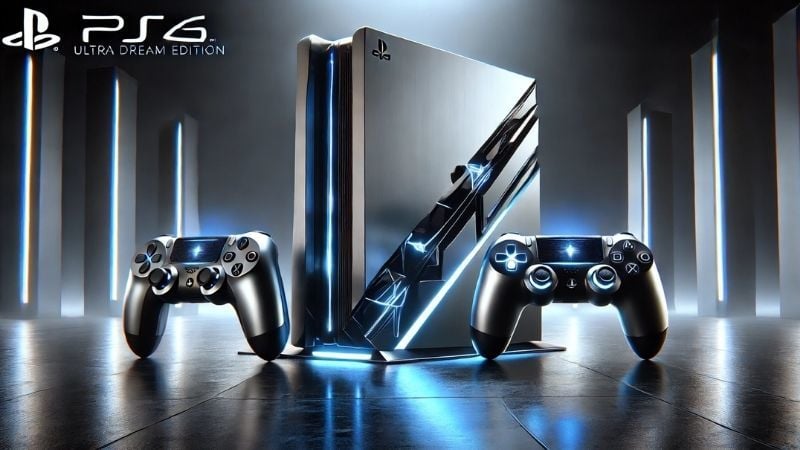The survival of PlayStation, which cannot deliver the performance we desire in the 5th generation, is hanging by a thread. So what should the PS6 features, games or strategy be like?
In order for the PlayStation series to regain its success with PS6, Sony needs to develop a multifaceted strategy. This goes not just through hardware and games, but also through user experience, marketing and services development. Features, games to make PS6 successful Below we list how it should be and all that can be done.
Please be careful while reading this content: None of the information presented is the features announced by the company. It is just a fantasy work that we dream of and believe will make us happy if it is among the release features of PS6.
What Should PS6 Features Be Like? What are our expectations?
Of course, these are just what we desire. When the time comes and the product is launched, we will see more clearly how much Sony listens to the players.
1. PS6 System Features: Powerful Hardware and Future-Oriented Technology
- Performance Oriented Hardware: PS6 should make up for the performance shortcomings of previous generations. This is possible with a high-power CPU (e.g. based on AMD Zen 5/6), a GPU with at least 30 Teraflops, 32-64 GB RAM and ultra-fast SSD (2 TB NVMe PCIe 5.0). The console should be a real performance monster with the latest graphics technologies (8K and 12K resolution, 240 FPS support).
- Backwards Compatibility: PS6 should offer backwards compatibility for all PlayStation generations (PS1 to PS5). This could gain a large base of players who want to play their old games.
- Low Noise and Heating Problems: Quiet and cool operation of the console should be ensured with innovative solutions such as liquid cooling.
- Cloud Integration: PS6 offers zero latency for cloud-based gaming, which can make games a device-agnostic experience.
2. Exclusive Games and Stunning Titles from Day One

- Launch Games: PS6 should come with a strong game catalog on launch day. New games of popular series such as “God of War”, “The Last of Us”, “Horizon” and “Uncharted” should be prepared specifically for PS6. Remake, not remaster versions.
- Original and Innovative Games: The brand’s “quality game” perception should be strengthened by developing first-party games with brand new, impressive stories and innovative mechanics. Unfortunately, the aggressive gaming approach that Sony captured on PS4 could not be continued with PS5.
- Support for Indie Games: Independent developers should be provided with more budget and resources, so that games that offer different experiences can be attracted to the platform.
- Multiplayer and Live-Service Games: Strong multiplayer games and live service games that offer regular updates should be developed to keep players connected to the platform.
3. Strategic Collaborations

- Collaboration with 3rd Party Developers: Agreements should be made with major developers such as Square Enix, Capcom, Konami to provide special content and platform-specific advantages.
- E-Sports and Community Support: PS6 can appeal to competitive gamers by hosting e-sports tournaments. Additionally, social platform integrations should be developed for player communities.
- Embracing the Future with PS VR 3.0: Innovation can be achieved by making virtual reality experiences one of the core features of PS6.
4. User Experience and Services

- PlayStation Plus and PS Now Improvements:
- A larger game library and affordable subscription models that can compete with Game Pass should be offered.
- Special early access, DLCs and discounts should be provided to PS Plus members.
- Fast and Fluent Interface: PS6’s user interface should stand out from its competitors with its speed and fluidity.
- Personalization: Players should be able to customize the interface, profile, and even game modes.
5. Marketing and Community Management

- Powerful Launch Campaign: PS6 should be promoted with a massive marketing campaign. It must make a difference with advertisements, social media campaigns and launch events.
- User Feedback: Players’ demands should be taken into account during the development process of PS6. In particular, resolving the criticized features of the PS5 (high price, stock issues, missing features) can regain users’ trust.
- More Stock and Availability: Lessons should be learned from PS5’s stock issues and PS6 should be easily accessible in all markets from day one.
6. Creating Competitive Advantage

- Pricing Strategy: The PS6 may be more affordable than Xbox or other competitors, or it may appeal to a wide range of users by offering different models (for example, a basic and a premium model).
- Mobile and PC Support: Versions of PlayStation games optimized for mobile devices and PC can reach a wider audience.
- Hybrid Console Approach: Offering a portable mode like the Nintendo Switch could increase the console’s appeal.
The PlayStation series could make a strong comeback with PS6. To achieve this, we must raise the bar in performance, user experience and game development; should prioritize the needs and expectations of the player community. With Sony’s strong brand and loyal fan base, if the right strategies are implemented, PS6 can usher in a new golden age.
Finally, let’s list the PS6 system features we desire in order to get a high-level PlayStation experience.

High-End PlayStation 6 (Ultra Dream Edition)
Processor (CPU):
- AMD Ryzen Threadripper Z6 Custom Chip
- 16 cores, 32 threads, 6 GHz turbo frequency.
- 3nm manufacturing technology – energy efficiency and maximum performance.
- AI accelerator cores are optimized for physics and simulation-based games.
Graphics Processor (GPU):
- AMD RDNA 5++ or NVIDIA Ada Lovelace Custom GPU
- 50+ Teraflops of graphics power (at RTX 5090 level).
- Support for 120 FPS at 12K resolution.
- Real-time ray tracing + global illumination + physically based rendering.
- AI-Boosted Rendering – artificial intelligence system that renders in real time at low resolution and upscales it to 16K resolution.
Memory (RAM):
- 64GB GDDR8 RAM – high bandwidth (2 TB/s).
- Instant switching between multiple game and media applications.
Storage (SSD):
- 4TB PCIe 6.0 NVMe SSD
- 25 GB/s read/write speeds.
- Instant loading times, completely zero “loading screen”.
Sound System:
- Dolby Atmos Quantum Audio Engine
- 360 degree surround sound.
- Advanced sound physics simulation (e.g. echoes, pressure differences).
Connection:
- Wi-Fi 7.5 Ultra-Broadband – online gaming with millisecond latencies.
- 6 USB-C 5.0 ports And Thunderbolt 5.0 support.
- 2 pieces HDMI 2.3 output (multi-monitor support).
Cooling:
- Liquid Metal + Vapor Chamber Cooling
- AI-controlled temperature management for thermal dynamics.
- Completely silent, 0% noise.
Controller (DualSense Infinity):
- Full touch screen controller.
- Haptic Feedback 3.0: More detailed vibration and texture sensation (e.g. triggers that make you feel grass, sand, metal textures).
- Self-charging battery (charges with motion energy).
Operating System:
- PlayStation AI OS 7.0
- 100% control with voice commands.
- Artificial intelligence-supported game assistant (for example, it can solve a section you are having difficulty with for you).
Features and Services:
- Holo-Projection Mode: The console will be able to project games holographically on the wall or table.
- Cloud Native Integration: Zero lag in cloud gaming (streaming at 10K resolution).
- Backwards Compatibility 2.0: Full compatibility with all PlayStation generations (PS1 to PS6).
Design:
- Modular Design: Console components can be replaced and upgraded by the user.
- Eco-friendly case made from minimalist, carbon-neutral materials.
Performance:
- 240 FPS at 12K And 120 FPS at 16K resolution gameplay.
- Ultra-realistic graphics with real-time AI optimizations.
- ray tracing with full environmental simulation (dynamic weather, light, and water physics).
